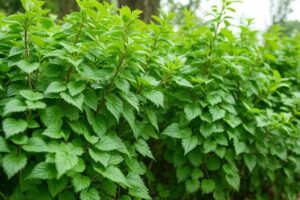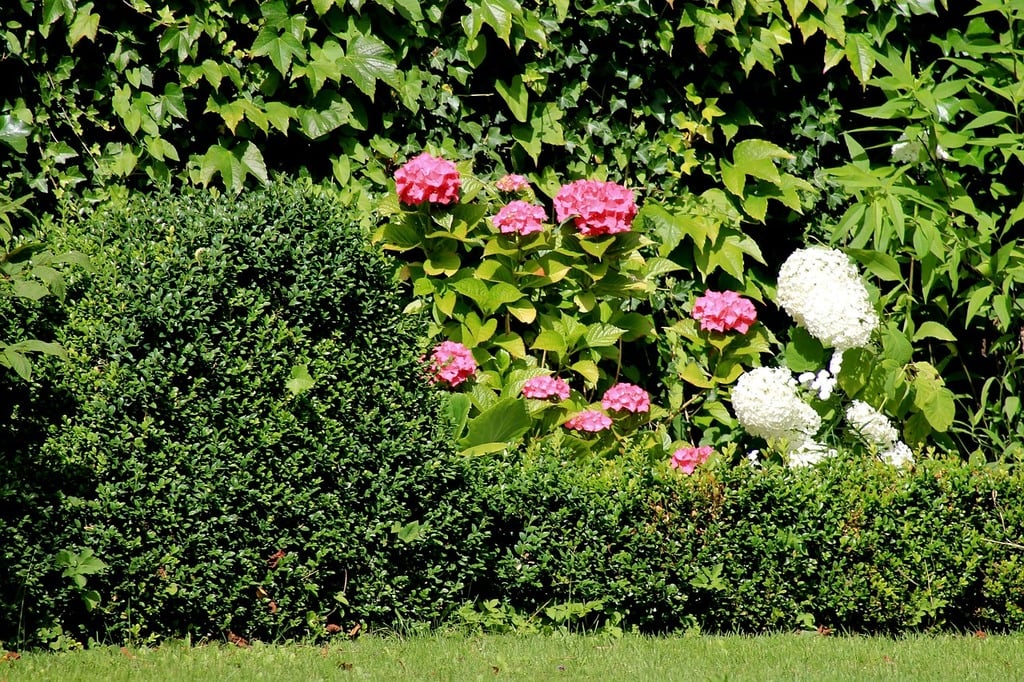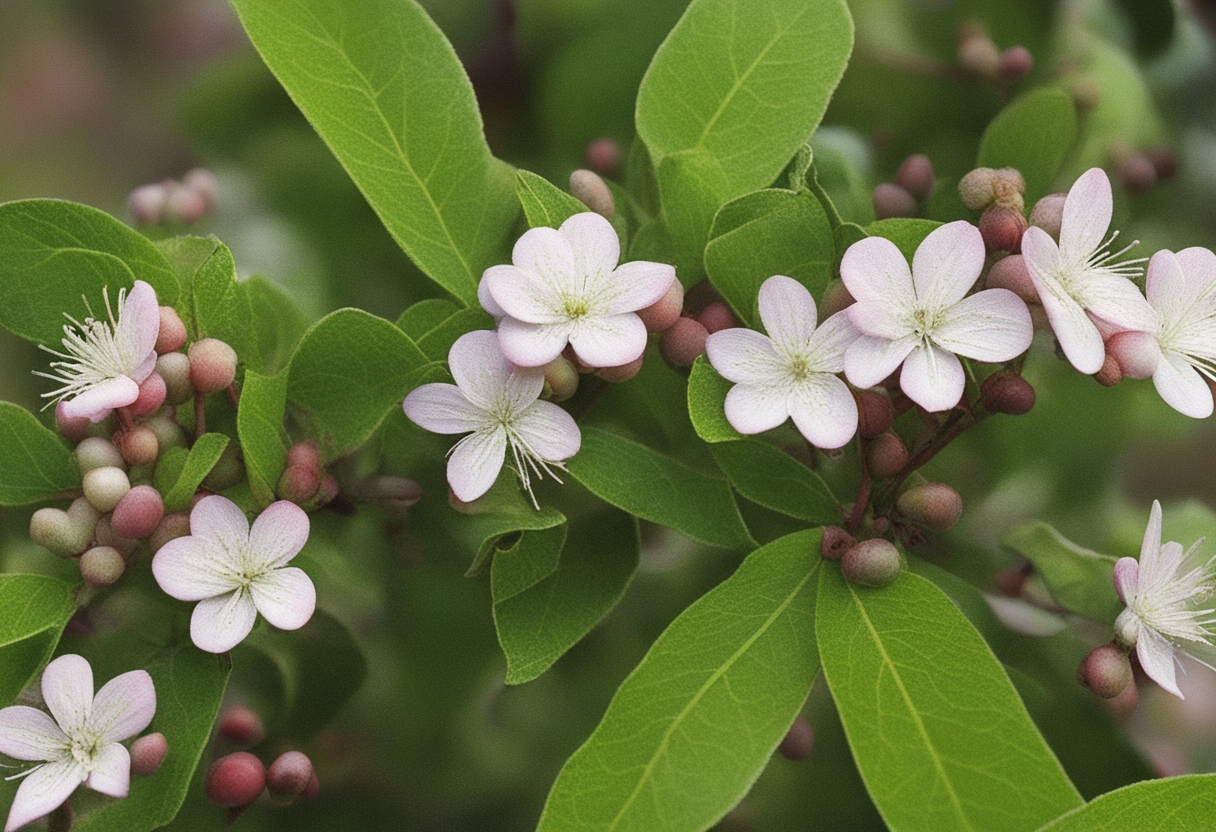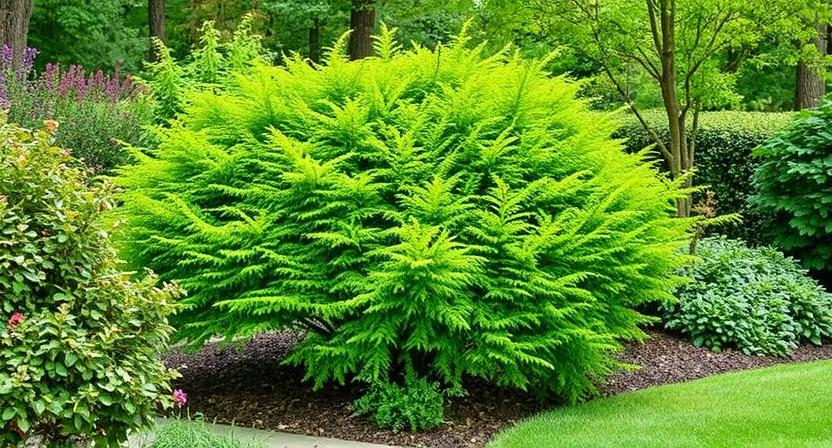Understanding Shrubs: An Overview of Different Types and Varieties
Shrubs are a diverse group of plants that can add beauty and structure to any garden or landscape. With countless types and varieties to choose from, it can be overwhelming to know where to begin. Understanding the different types and varieties of shrubs is key to selecting the right ones for your specific needs.
One popular type of shrub is the flowering shrub. These shrubs produce beautiful blooms in a variety of colors, adding a burst of color to your garden. Some common examples include roses, lilacs, and hydrangeas. Another type is the evergreen shrub, which retains its foliage year-round, providing a lush and green backdrop even during the colder months. Examples of evergreen shrubs include boxwood, juniper, and holly. Additionally, there are deciduous shrubs, which shed their leaves in the fall. These include favorites like forsythia, spirea, and dogwood. By familiarizing yourself with the different types and varieties of shrubs, you can choose the ones that will best suit your preferences and needs in terms of size, shape, color, and maintenance requirements.
• Flowering shrubs are a popular choice for adding color to gardens, with examples such as roses, lilacs, and hydrangeas.
• Evergreen shrubs retain their foliage year-round, providing a green backdrop even in colder months. Examples include boxwood, juniper, and holly.
• Deciduous shrubs shed their leaves in the fall but offer beautiful blooms during other seasons. Favorites include forsythia, spirea, and dogwood.
• Understanding the different types of shrubs allows you to select ones that fit your preferences in terms of size, shape, color, and maintenance requirements.
Selecting the Right Shrubs for Your Garden: Factors to Consider
When it comes to selecting the right shrubs for your garden, there are several factors that you need to consider. One important factor is the climate in your area. Different shrubs thrive in different climates, so it’s important to choose ones that are suitable for your specific region. Some shrubs, like hydrangeas, prefer a cooler climate, while others, like cacti, are more suited to arid or hot climates. By understanding your climate and choosing shrub varieties accordingly, you can ensure that your plants will thrive and grow beautifully.
Another factor to consider when selecting shrubs for your garden is the amount of sunlight they will receive. Some shrubs, such as roses, require full sun to flourish, while others, like ferns, prefer shade or partial shade. By observing the sunlight patterns in your garden and selecting shrubs that match those conditions, you can create an environment in which your plants will thrive. Additionally, considering the size of your garden and the mature size of the shrubs is important. Large, spreading shrubs might overpower a small garden and need constant pruning, while smaller shrubs may get lost in a larger garden. By choosing shrubs that are proportionate to your garden space, you can create a harmonious and visually appealing landscape.
• Climate is an important factor to consider when selecting shrubs for your garden
• Different shrubs thrive in different climates
• Choose shrubs that are suitable for your specific region
• Consider the temperature, humidity, and rainfall patterns in your area
• Some shrubs prefer cooler climates while others are more suited to hot or arid climates
• The amount of sunlight the shrubs will receive is another important factor to consider
• Some shrubs require full sun to flourish while others prefer shade or partial shade
• Observe the sunlight patterns in your garden and select shrubs accordingly
• Ensure that the chosen location matches the sunlight requirements of the selected shrub varieties
• Consider the size of your garden and the mature size of the chosen shrubs
• Large spreading shrubs might overpower a small garden and need constant pruning
• Smaller shrubs may get lost in a larger garden, so choose proportionate sizes
• Create a harmonious and visually appealing landscape by selecting appropriately sized plants
Essential Tools and Equipment for Planting Shrubs
When it comes to planting shrubs, having the right tools and equipment is essential for a successful gardening experience. One of the most important tools you will need is a sturdy garden shovel. This will help you dig the proper hole for planting the shrub, ensuring that it has enough space for its roots to grow. Additionally, a hand trowel can be useful for smaller shrubs or for precision work, such as removing weeds or loosening soil around the base of the plant.
Another important tool to have is a pair of sharp pruning shears. These will come in handy when it’s time to trim back any overgrown branches or shape your shrubs for aesthetics. It’s important to keep your pruning shears clean and sharp to avoid damaging the shrubs. Additionally, a pair of sturdy gardening gloves will help protect your hands from thorns, branches, and any potential irritants in the soil. Gloves will also provide a better grip on tools and protect your hands from blisters or scratches.
• A sturdy garden shovel: Helps dig the proper hole for planting shrubs
• A hand trowel: Useful for smaller shrubs or precision work like removing weeds or loosening soil
• Sharp pruning shears: Essential for trimming back overgrown branches and shaping shrubs
• Clean and sharp pruning shears: Prevents damage to the shrubs during trimming
• Sturdy gardening gloves: Protects hands from thorns, branches, irritants in the soil, blisters, and scratches
Preparing the Soil: Creating the Ideal Environment for Healthy Shrubs
Preparing the soil is a crucial step in creating the ideal environment for healthy shrubs to thrive. Before planting, it is important to assess the soil conditions in your garden. Start by testing the pH levels, as shrubs tend to prefer slightly acidic to neutral soil. There are affordable soil testing kits available in most gardening stores, or you can send a sample to a laboratory for more accurate results. Once you have determined the pH level, you can adjust it accordingly by adding amendments such as lime to raise the pH or sulfur to lower it.
In addition to pH levels, it is essential to consider the soil’s texture and drainage capabilities. Shrubs generally prefer well-draining soil that does not become waterlogged. If your garden has heavy clay soil, you may need to improve drainage by adding organic matter such as compost or well-rotted manure. These amendments help to break up clay particles and create air pockets in the soil, allowing excess water to drain away more easily. Similarly, if your soil is sandy, adding organic matter can increase its ability to retain moisture and provide a more stable growing environment for shrubs. By taking the time to prepare the soil correctly, you can create an optimal foundation for healthy shrubs to thrive in your garden.
• Testing the pH levels of the soil is an important first step in preparing it for shrubs.
• Soil testing kits are readily available at gardening stores or you can send a sample to a laboratory for more accurate results.
• Adjusting the pH level can be done by adding amendments such as lime to raise it or sulfur to lower it.
• Consider the texture and drainage capabilities of your soil when preparing it for shrubs.
• Shrubs prefer well-draining soil that doesn’t become waterlogged.
• If you have heavy clay soil, improve drainage by adding organic matter like compost or well-rotted manure.
• Adding organic matter helps break up clay particles and create air pockets in the soil, allowing excess water to drain away easily.
• Sandy soils can benefit from added organic matter to increase moisture retention and provide a stable growing environment for shrubs.
By following these steps and taking the time to prepare your soil correctly, you will create an optimal foundation for healthy shrubs in your garden.
Step-by-Step Guide to Planting Shrubs: From Digging the Hole to Properly Positioning
Digging the hole is the first step in planting shrubs. It is important to choose a location that provides adequate sunlight and proper drainage. Start by using a shovel or spade to dig a hole that is wider and slightly shallower than the root ball of the shrub. The width of the hole should be about two times the diameter of the root ball. This will allow the roots to spread out and establish themselves more easily. Make sure not to dig too deep, as the shrub may sink lower when planted. Once the hole is dug, remove any rocks, weeds, or other debris from the bottom to create a clean planting area.
Properly positioning the shrub is crucial for its overall health and growth. Before placing the shrub in the hole, examine the root ball for any damaged or broken roots, and prune them if necessary. Carefully place the shrub in the hole, making sure it is centered and straight. The top of the root ball should be level with or slightly above the soil surface. If necessary, adjust the depth of the hole by adding or removing soil. Once the shrub is positioned correctly, backfill the hole with the soil removed earlier, gently tamping it down to eliminate any air pockets. Water the newly planted shrub thoroughly to help settle the soil and provide essential moisture to the roots.
• Choose a location with adequate sunlight and proper drainage
• Dig a hole that is wider and slightly shallower than the root ball of the shrub
• The width of the hole should be about two times the diameter of the root ball
• Remove any rocks, weeds, or debris from the bottom of the hole
• Examine the root ball for damaged or broken roots and prune if necessary
• Carefully place the shrub in the hole, ensuring it is centered and straight
• The top of the root ball should be level with or slightly above soil surface
• Adjust depth of hole by adding or removing soil if needed
• Backfill the hole with soil removed earlier, gently tamping it down to eliminate air pockets
• Water newly planted shrub thoroughly to settle soil and provide moisture to roots
Watering and Fertilizing Shrubs: Best Practices for Optimal Growth
Proper watering and fertilizing are crucial for the optimal growth of shrubs. Without sufficient water, shrubs can become stressed and weak, making them more susceptible to diseases and pest infestations. On the other hand, overwatering can lead to root rot and other root-related issues. It is important to strike the right balance by providing shrubs with the appropriate amount of water based on their specific needs.
When it comes to fertilizing shrubs, it is important to choose the right type and timing. Slow-release fertilizers are often recommended as they provide a continuous supply of nutrients over an extended period of time. It is best to apply fertilizers during the shrub’s active growing season, typically during spring or early summer. Remember to follow the instructions on the fertilizer packaging to ensure proper usage and avoid over-fertilizing, which can harm the shrubs. Regular monitoring and adjustment of the watering and fertilizing regimen will help ensure healthy growth and vibrant shrubs in your garden.
• Provide shrubs with the appropriate amount of water based on their specific needs
• Avoid overwatering to prevent root rot and other root-related issues
• Choose slow-release fertilizers for continuous nutrient supply
• Apply fertilizers during the shrub’s active growing season, typically spring or early summer
• Follow instructions on fertilizer packaging to avoid over-fertilizing
• Regularly monitor and adjust watering and fertilizing regimen for optimal growth.
Pruning and Trimming Shrubs: Techniques to Maintain Shape and Health
Pruning and trimming shrubs is an essential part of maintaining their shape and overall health. Regular pruning helps to remove dead or damaged branches, promote new growth, and shape the shrub according to your desired form. It is best to prune shrubs during their dormant season, usually in late winter or early spring, before they start actively growing again. By doing so, you ensure that the shrub’s energy is focused on producing new foliage rather than repairing and healing wounds caused by pruning. When pruning, it’s important to use sharp and clean tools to make clean cuts and minimize the risk of disease or pests entering the plant.
Trimming, on the other hand, is a maintenance technique that involves removing excessive or unruly growth from the shrub. This helps to maintain its size and shape, preventing it from becoming overgrown and dominating the surrounding space. Regular trimming also encourages the shrub to produce more compact and dense foliage, resulting in a neater and more aesthetically pleasing appearance. When trimming, it’s crucial to follow the natural shape of the shrub and avoid cutting into the woody stems or branches, as this can cause long-term damage. By using proper pruning and trimming techniques, you can ensure that your shrubs not only look attractive but also stay healthy and thrive in your garden.
• Regular pruning removes dead or damaged branches and promotes new growth
• Pruning during the dormant season allows the shrub to focus on producing new foliage
• Sharp and clean tools should be used to make clean cuts and minimize the risk of disease or pests entering the plant
• Trimming helps maintain the size and shape of the shrub, preventing it from becoming overgrown
• Regular trimming encourages compact and dense foliage for a neater appearance
• Follow the natural shape of the shrub when trimming to avoid long-term damage
Dealing with Common Pests and Diseases in Shrubs: Prevention and Control
When it comes to caring for your shrubs, dealing with common pests and diseases is an essential task for ensuring their health and longevity. Prevention and control strategies can help to minimize the damage caused by these unwanted intruders, keeping your shrubs lush and vibrant.
One of the first steps in preventing pest and disease issues is maintaining proper garden hygiene. Regularly remove fallen leaves, dead branches, and other plant debris, as they can provide a breeding ground for pests and pathogens. Additionally, make sure to properly space out your shrubs, allowing for adequate air circulation and reducing the risk of disease transmission. By keeping your garden clean and well-organized, you can create an environment that is less attractive to pests and less conducive to the spread of diseases.
Implementing natural pest control methods can also be effective in preventing and managing infestations. For instance, attracting beneficial insects like ladybugs and lacewings can help to control aphids and other pests. You can achieve this by planting flowers and herbs that attract these beneficial insects, such as marigolds and dill. Additionally, using organic pest control products, such as neem oil or insecticidal soap, can help to combat common pests without harming beneficial insects or the environment.
• Regularly remove fallen leaves, dead branches, and other plant debris
• Properly space out shrubs to allow for adequate air circulation
• Attract beneficial insects like ladybugs and lacewings by planting flowers and herbs that attract them
• Use organic pest control products such as neem oil or insecticidal soap
Winterizing Shrubs: Protecting Your Plants from Cold Weather
When the winter season approaches, it is crucial to take the necessary steps to protect your shrubs from the cold weather. One of the most effective ways to do this is by applying a layer of mulch around the base of the shrubs. This helps to insulate the soil and retain moisture, which is essential for the health of the plants during winter. Additionally, you can consider wrapping delicate shrubs with burlap or frost blankets to provide an extra layer of protection against frost and freezing temperatures.
Another important aspect of winterizing shrubs is proper watering. It may be tempting to reduce watering during the winter months, but it is essential to ensure that your shrubs receive adequate moisture. This is especially important if there is a lack of snowfall or rainfall. Be sure to water the shrubs thoroughly before the ground freezes, as this will help to hydrate the roots and prevent them from drying out during the dormant period. Remember to use caution and avoid overwatering, as this can lead to root rot and other issues.
• Apply a layer of mulch around the base of the shrubs to insulate the soil and retain moisture.
• Consider wrapping delicate shrubs with burlap or frost blankets for extra protection against frost and freezing temperatures.
• Ensure that your shrubs receive adequate moisture by watering them thoroughly before the ground freezes.
• Be cautious not to overwater, as this can lead to root rot and other problems.
Troubleshooting Common Issues: Tips for Addressing Shrub Problems
A well-maintained garden can bring immense joy and beauty to any homeowner. However, shrubs can sometimes present challenges that require troubleshooting and problem-solving. In this section, we will explore some common issues that can arise with shrubs and provide tips on how to address them effectively.
One of the most common problems that gardeners encounter with shrubs is pests. These unwanted visitors can wreak havoc on the health and appearance of your plants. To prevent pests from infesting your shrubs, it is essential to regularly inspect them for any signs of damage or infestation. Additionally, maintaining good overall garden hygiene can help minimize the risk of pests. If you do spot pests on your shrubs, promptly identify the culprit and explore appropriate control methods, such as insecticidal soaps or natural predators. By staying vigilant and taking proactive measures, you can effectively troubleshoot and address pest-related issues in your shrubs.
• Regularly inspect shrubs for signs of damage or infestation
• Maintain good overall garden hygiene to minimize risk of pests
• Promptly identify the culprit if pests are spotted on shrubs
• Explore appropriate control methods, such as insecticidal soaps or natural predators












